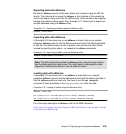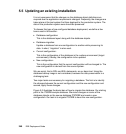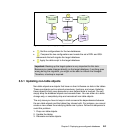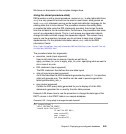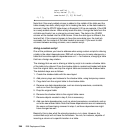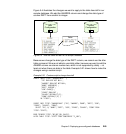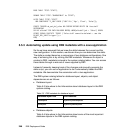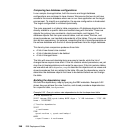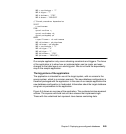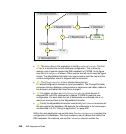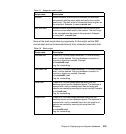
246 DB2 Deployment Guide
DROP TABLE "ITSO"."STAFF";
RENAME TABLE "ITSO"."SHADOWTABLE" to "STAFF";
ALTER TABLE "ITSO"."STAFF"
ADD CONSTRAINT "C_JOB" CHECK ("JOB" IN ( 'Mgr', 'Clerk', 'Sales'));
CREATE TRIGGER do_not_del_sales NO CASCADE BEFORE DELETE ON itso.staff
REFERENCING
OLD AS oldstaff FOR EACH ROW MODE DB2SQL WHEN(oldstaff.job = 'Sales') BEGIN
ATOMIC SIGNAL SQLSTATE '75000' ('Sales staff cannot be deleted... see the
DO_NOT_DEL_SALES trigger.');--
END;
5.5.3 Automating update using DB2 metadata with a Java application
So far we have assumed that we knew the delta between the current and the
new configuration. In this section, we discuss how you can determine this delta.
The delta is created based on a comparison of two database configurations. One
way of achieving this is by utilizing the DB2 metadata. Whenever an object is
created in DB2, metadata is stored in the system catalog tables. You can access
these tables through a wide set of views supplied by DB2.
Instead of manually keeping track of the changes and manually generate the
delta script, you can use an application to do it automatically based the DB2
metadata. We demonstrate this automation with a Java application.
The DB2 system catalog tables for database layout, objects, and object
dependences are as follows:
Database layout:
Table 5-3 lists where to find information about database layout in the DB2
system catalog.
Table 5-3 DB2 metadata for database layout
Database objects:
Table 5-4 lists where to find information about some of the most important
database objects in the DB2 system catalog.
Database layout item DB2 metadata
Tablespace sysibm.systablespaces
Bufferpool sysibm.sysbufferpools




